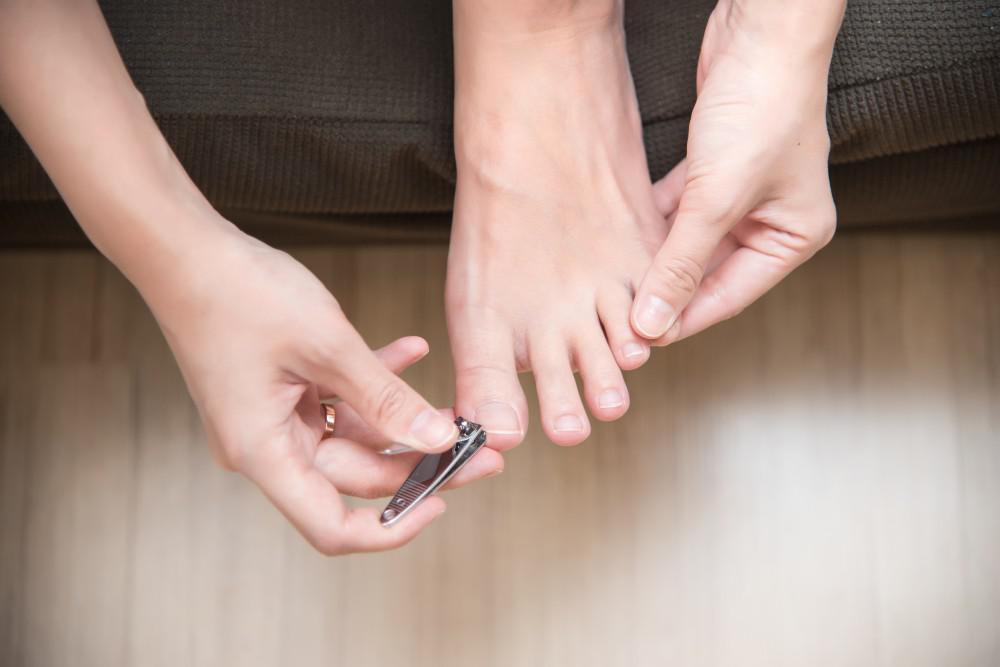
Are You Cutting Your Toenails the Right Way?

Did you know your toenails grow about 1.6 millimeters every month? Your nails start growing before you’re born and keep growing over the course of your life, which means that trimming them regularly is an essential part of your personal hygiene routine.
It’s something everyone must do, but few people give it much thought — and you could be cutting your nails wrong without even knowing it. Lisa Burson, DPM, and Joe Aoun, DPM, are here to help.
We specialize in comprehensive foot care at The Foot & Ankle Specialists, and that includes toenail trimming. There’s a right and wrong way to cut your toenails, and doing it the right way helps you avoid painful foot problems.
The way you cut your toenails matters
Cutting your nails might seem like an insignificant chore. However, toenails that are too long, too short, or cut the wrong way can hurt your feet and even increase your risk of other health issues.
Long toenails easily get caught on socks, shoes, and blankets. When they catch, they can break, and those sharp, jagged edges can cut your other toes and your feet.
On the other hand, toenails that are too short increase your risk of ingrown nails. Ingrown nails form when the nail corner grows into the soft skin around it. Ingrown nails are painful, and they can get infected.
If you have diabetes, the way you cut your toenails is particularly important. Diabetic nerve damage decreases sensation to your feet, which means small cuts and scrapes can go unnoticed. Poor circulation slows healing, and those wounds can get infected and become diabetic foot ulcers.
How to cut your toenails properly
So, cutting your toenails the right way is important — both for your feet and your overall health — but how can you make sure you’re doing it correctly?
Start by making a habit of cutting your toenails about every six to eight weeks. Your nails might grow slower or faster than the average, so check your feet regularly to make sure your nails don’t get too long before you cut them again.
When it’s time to cut your nails, here’s how to do it right:
Wash your feet
Before cutting your nails, wash your feet with a gentle soap, then rinse them. Dry your feet thoroughly, and make sure to dry all the skin between your toes, too.
Use the proper tools
Use clean, sharp nail tools to cut your toenails. Toenail clippers and nail scissors both work well, so choose the tools with which you feel most comfortable.
Clip your toenails
Next, clip your nails. Cut toenails straight across, and don’t round the edges. Aim to cut them short enough that they won’t catch on things, but not so short that they feel sensitive to the touch.
File your toenails
After clipping, check the edges of your nails for rough spots. If necessary, file your toenails to smooth out the edges. Wait until your nails are completely dry to file them, and always file in one direction (not back and forth) to avoid splintering.
Remember that our team at The Foot & Ankle Specialists offers professional nail trimming services, too. If you have trouble reaching your toes or you’re concerned about cutting your nails the wrong way, ask about getting your nails cut in the office.
Professional nail trimming is safe and effective. Plus, we can combine the service with a full foot exam to monitor your health and identify any new issues.
To learn more about the right way to cut your toenails or to book a professional nail trimming appointment, call our offices in Bay City, Caro, or Lapeer, Michigan, or use the online booking tool today.
You Might Also Enjoy...


What's the Difference Between Bunions and Bunionettes?

3 Reasons Why Ingrown Toenails Are Dangerous If You Have Diabetes

Essential Training Tips If You're Prone to Shin Splints

Are Bunions Treatable Without Surgery?


